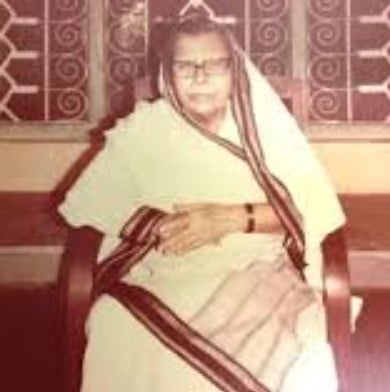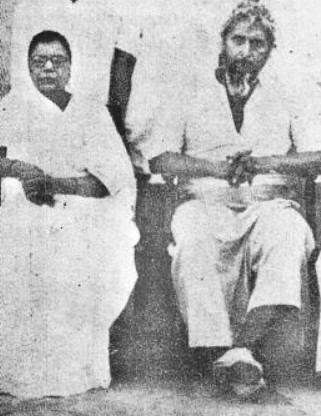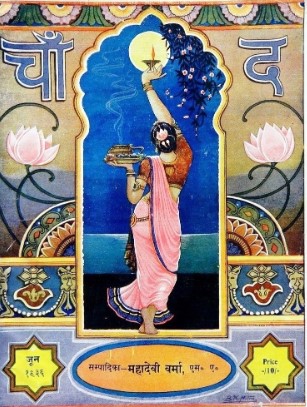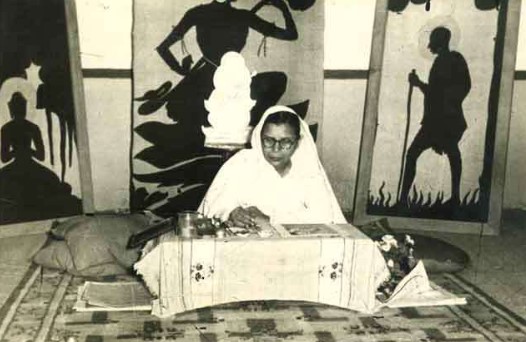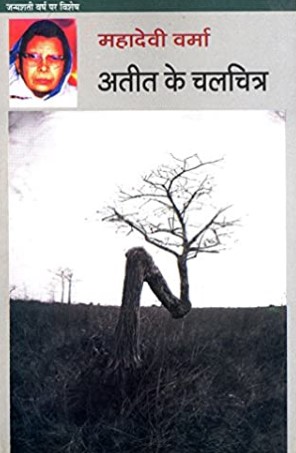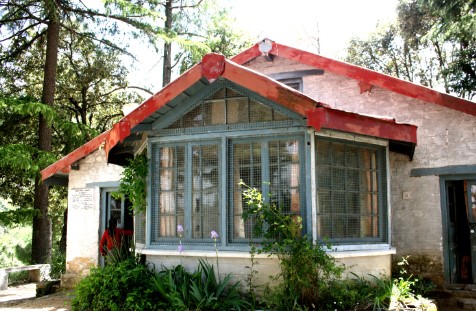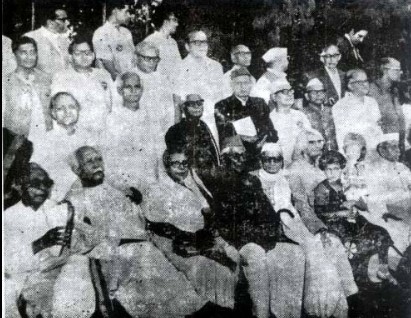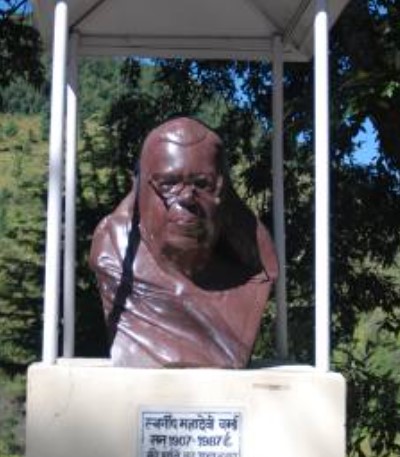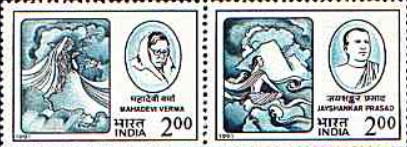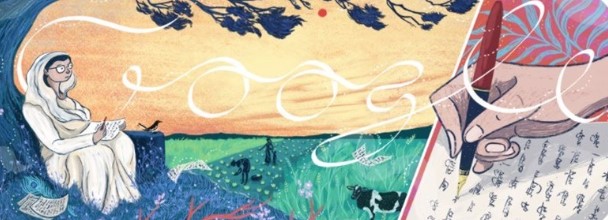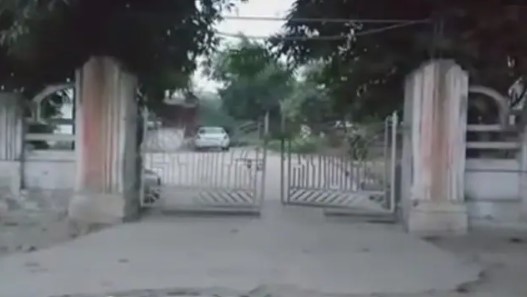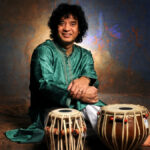Mahadevi Varma Age, Death, Husband, Children, Family, Biography & More
| Bio/Wiki | |
|---|---|
| Names earned | • Modern Mira • Saraswati of the Great Temple of Hindi |
| Profession(s) | • Poet • Essayist • Sketch story writer |
| Famous for | Her notable poems Yama and Mera Parivaar and literary movement 'Chhayavaad' |
| Physical Stats & More | |
| Eye Colour | Black |
| Hair Colour | Salt and Pepper |
| Career | |
| Debut | Poetry Collection: Nihar (1930)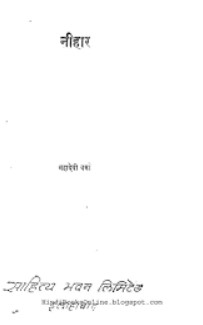 |
| Awards, Honours, Achievements | 1956: Padma Bhushan 1982: Jnanpith Award 1988: Padma Vibhushan |
| Personal Life | |
| Date of Birth | 26 March 1907 (Tuesday) |
| Birthplace | Farrukhabad, United Provinces of Agra and Oudh, British India |
| Date of Death | 11 September 1987 |
| Place of Death | Allahabad, Uttar Pradesh, India |
| Age (at the time of death) | 80 Years |
| Death Cause | Natural Death [1]NDTV |
| Zodiac sign | Aries |
| Signature |  |
| Nationality | Indian |
| Hometown | Farrukhabad, United Provinces of Agra and Oudh, British India |
| Address | Nevada, Ashok Nagar, Uttar Pradesh |
| School | Mission School Indore |
| College/University | Allahabad University |
| Educational Qualification | 1929: Post graduation in English from Crosthwaite Girls College, Allahadbad University [2]Mahadevi Varma by Anita Anantharam |
| Caste | Kayashtha Brahmin [3]Mahadevi Varma by Anita Anantharam |
| Food Habit | Vegetarian [4]Mahadevi Varma by Anita Anantharam |
| Relationships & More | |
| Marital Status (at the time of death) | Separated [5]Mahadevi Varma by Anita Anantharam |
| Marriage Date | Year, 1916 Note: She got married at the age of nine. [6]The Print |
| Family | |
| Husband/Spouse | Vikas Narayan Singh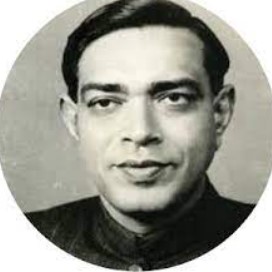 |
| Parents | Father- Govind Prasad Varma (professor in a college in Bhagalpur) Mother- Hem Rani Devi |
| Siblings | She had two siblings. Note: She was the eldest daughter of her parents. |
Some Lesser Known Facts About Mahadevi Varma
- Mahadevi Varma was an Indian poet, essayist, and sketch story writer in the Hindi language. She is also considered a distinguished personality of Hindi literature and one of its four major pillars in the Chhayawadi era. She is remembered by the name Modern Meera by other poets of India. Varma was an Indian poet who witnessed India both before and after independence, so, she was one of the poets who wrote while keeping in mind the wider aspects of Indian society. She is the recipient of all the significant awards in Hindi literature. She was an Indian social reformer who worked as a public servant for the upliftment of women and their education.
- Through her writings, Varma advocated for the social upliftment, welfare, and development of Indian women. Through her novel, Deepshikha, she has influenced many readers and critics for the betterment of women in Indian society. Throughout her life, she remained a pioneer of feminism in India.
- The great Indian poet Suryakant Tripathi “Nirala” once mentioned her as “Saraswati in the vast temple of Hindi Literature.”
- She is known for developing a soft vocabulary in Hindi poetry. She has composed many poems in Khadi Boli, which were earlier only composed in Braj Bhasha. She composed these poems in the soft words of Sanskrit and Bangla, and later, she adapted them to Hindi.
- Apart from writing poems, she was very well-trained in music. She composed many gentle Hindi songs. She was proficient in painting and was a skilled and creative translator.
- Soon after completing her formal education, she began working as the Principal of Prayag Mahila Vidyapeeth in Allahabad, Uttar Pradesh. Later, she was appointed as the Vice Chancellor of the same institution. She got married at the age of eleven, however, soon after completing her studies, she did not go to her husband’s house and chose to live an ascetic life.
- According to some books, she was born to a religious, passionate, and vegetarian woman. Her mother had a keen interest in music and used to recite Indian epics such as Ramayana, Gita, and Vinay Patrika for long hours. Her mother was well-versed in Sanskrit and Hindi languages. Reportedly, she was a very religious lady. According to Mahadevi, she was inspired by her mother to write poems and to take an interest in literature. Her mother introduced her to Panchatantra tales and Mirabai’s poetry. However, her father’s personality was different from her mother’s. He was a hunting enthusiast and a cheerful person. He was also a music lover like his wife and was a scholar and an atheist.
- Mahadevi Varma was good friends with renowned Indian poets Sumitranandan Pant and Suryakant Tripathi Nirala. Reportedly, she used to tie Rakhis to Nirala for more than forty years.
- In her childhood, she was enrolled in a convent school by her parents, but she wished to study at Crosthwaite Girls College in Allahabad. Once, in a media conversation, she narrated that during her school days and at the school hostel at Crosthwaite, she observed that students of different religions lived together, which taught her the strength of unity. She added that she began writing poems secretly during her school days; however, once, her senior and roommate, Subhadra Kumari Chauhan exposed her hidden talent after she discovered a stash of poems in Mahadevi’s room. Mahadevi said,
While others used to play outside, me and Subhadra used to sit on a tree and let our creative thoughts flow together…She used to write in Khariboli, and soon I also started to write in Khariboli…this way, we used to write one or two poems a day. — Mahadevi Varma, Smrti Chitra (Memory Sketch)
- Soon, Mahadevi and Subhadra began sending their poems to some noted weekly magazines and publications, which published some of their poems in their editions. Thereafter, both of them began attending poetry seminars, where they received the opportunity to read out their poems in front of an audience. They also got the chance to meet prominent Indian Hindi poets. They used to compose poems together and attend seminars together until Subhadra graduated from Crosthwaite.
- Varma narrated in her childhood biography, Mere Bachpan Ke Din (My Childhood Days), that in her childhood, she felt very lucky to be born into a family in which she was considered a goddess as there were no girls in her family from many generations. Once, in a media conversation, she explained that her grandfather’s name was Baba Babu Banke Vihari and he was the one who named her ‘Mahadevi.’ She was considered the goddess of the house. Her grandfather was very supportive and motivated her parents to make her a scholar by giving her higher educational opportunities. On the contrary, her grandfather nodded to comply with the tradition and marry her at the age of nine.
- During her entire career, she contributed effortlessly towards writing, editing, and teaching. During her tenure at Prayag Mahila Vidyapeeth in Allahabad, she worked entirely toward its development. She worked as a revolutionary toward the upliftment of women’s education during that time.
- In 1923, she began working in Chand, a women’s leading magazine. Later, in 1955, she founded a Literary Parliament in Allahabad along with her colleague, Ilachandra Joshi and began working as its editor. Many women’s poets’ conferences were founded by her in India.
- Mahadevi was influenced by the teaching of Buddhism and Mahatma Gandhi. She worked as a public servant in Jhansi during India’s struggle for freedom.
- In 1929, after completing her graduation, Mahadevi refused to go and live with her husband, Swarup Narain Varma. According to Mahadevi, they were incompatible. She did not like his hunting and meat-eating habits. She had been married to him when she was a child and as per the custom, she had to shift at her husband’s house soon after completing her education; however, she denied the same. Her father persuaded her to get divorced from Swarup Narain Varma and remarry, but she wished to remain single throughout her life. She even tried to convince her husband to remarry; however, he also denied the same. Reportedly, later, it was heard that she became a Buddhist nun; however, the news was not true. According to Mahadevi, Buddhist Pali and Prakrit texts were her subjects during her master’s degree.
- In 1930, she released her debut book titled Nihar, which was a collection of poems. In 1932, she composed Rashmi, and she composed Neerja in 1933. In 1935, she published her collection of poems named Sandhyageet. In 1939, she published her four poetic collections under the title Yama. Later, she went on to write 18 novels and short stories including Mera Parivar (My Family), Smriti ki Rekhaye (Lines of Memory), Patha ke Sathi (Path’s Companions), Srinkhala ke Kariye (Series of Links), and Atit ke Chalachrit (Past Movies).
- In 1937, Mahadevi Varma built a house named Meera Temple in the village Umagarh, Ramgarh, Uttarakhand, which is 25 km from Nainital. She began living in this village and worked for the welfare and education of the local villagers, especially for women’s education and economic self-sufficiency. Later, after her death, this house was renamed by the Government of India as Mahadevi Sahitya Museum.
- Some Indian poets and scholars believe that the poetic compositions by Mahadevi Varma are very personal, and the suffering, rage, and empathy, she portrayed in her writings are totally artificial. One of the Indian critics, Ramchandra Shukla quoted that the sensations that Mahadevi revealed in her writing were strange. He quotes,
With regard to this anguish, she has revealed such sensations of heart, which are extraterrestrial. As far as these sensations are concerned and how far the sensations are real, nothing cannot be said.”
- Another noted Indian poet Hazari Prasad Dwivedi cited Mahadevi’s poems as self-centred. He said,
Poetic works like Deep from (Nihar), Madhur Madhur Mere Deepak Jal from (Neerja) and Mome Sa Tan Gal Hai, concludes that these poems not only explain Mahadevi’s self-centerness but also to be considered a representative form of general posture and texture of her poems.”
- Satyaprakash Mishra criticised that her philosophy of metaphysics is connected to cinematography. He said,
Mahadevi did not only differentiate and distinguish from the earlier poetry of the object craft of Shadowism and Mysticism by virtue of rationalism and examples, but also showed in what sense it is human. There is poetry of change of sensation and newness of expression. She did not accuse anyone of sentiment, adoration etc. but only described the nature, character, appearance and uniqueness of Chhayavad.”
- David Rubin, an American novelist, narrated Mahadevi’s work as follows,
What arrests us in Mahadevi’s work is the striking originality of the voice and the technical ingenuity which enabled her to create in her series of mostly quite short lyrics throughout her five volumes a consistently evolving representation of total subjectivity measured against the vastness of cosmic nature with nothing, as it were, intervening—no human social relationships, no human activities beyond those totally metaphorical ones involving weeping, walking the road, playing the Veena etc.”
- Indian poet Prabhakar Shrotriya believes that her poems which show her anger and despair expose the truth of life by depicting the fire of suffering. He says,
In fact, the center of Mahadevi’s experience and creation is fire, not tears. What is visible is not the ultimate truth, what is invisible is the original or inspiring truth. These tears are not the tears of easy simple anguish, but how much fire goes behind them, the thunder-storm, the electric roar of the cloud, and the rebellion is hidden.”
- Mahadevi Varma’s poems mainly focussed on Chhayavaad (shadowism). In 1973, she released a poetry collection titled “Banga Bhu Shanth Vandana” during the Bengal famine. Later, she published a collection of poems titled Himalaya in response to the invasion of China.
- Mahadevi Varma began composing her collections of poems in Hindi literature in Khadi Boli, which was a refined version of Braj Bhasha and introduced its softness to her Hindi poetry. She had a great contribution to Indian philosophy as she composed some repositories of songs. She contributed a lot to the fields of language, literature, and philosophy. Reportedly, she had a unique rhythm and simplicity in her compositions and the language of her songs was also natural.
- She was a great contributor to the prosperity of Chhayavadi poetry along with other noted Indian poets such as Jaishankar Prasad, Suryakant Tripathi Nirala, and Sumitranandan Pant. She put emotionalism and intensity of feeling in her poetry. She was often invited by many renowned Indian institutions to deliver Hindi speeches through seminars, which were full of compassion for the common man and truth. In 1983, she was invited to the third World Hindi Conference in Delhi, as chief guest of the closing ceremony.
- She completed her eighth class in 1921. In 1925, she completed her Senior secondary education. In 1932, she completed her master’s degree. By this time, two of her poetry collections named Rashmi and Vihar were published.
- Her husband, Swaroop Narayan Verma belonged to Nawabganj Ganj town in Uttar Pradesh. At the time of marriage, Swaroop Narayan was studying in class tenth. Mahadevi Verma was also completing her school education at that time and used to live in the school hostel. Reportedly, the relationship between them remained friendly during their studies period as they used to talk to each other through letters. In 1966, Swaroop Narayan passed away, and soon after his death, Mahadevi began living in Allahabad.
- Mahadevi Verma was a compassionate animal lover. She had pets such as a peacock named Neelkanth, Gaura, a cow gifted to her by her sister and a rabbit called Durmukh. Reportedly, Mahadevi Verma stood first in the entire province in class eighth.
- In 1952, she was nominated to the Uttar Pradesh Legislative Council.
- She earned the D.Lit (Doctor of Letters) from Vikram University in 1969, Kumaun University, Nainital in 1977, Delhi University in 1980, and Banaras Hindu University, Varanasi in 1984. She was felicitated with the Sakseria Award for Neerja in 1934. In 1942, she was honoured with the Dwivedi Medal for the lines of memory.
- In 1971, she joined the Indian Sahitya Akademi and became the first woman to become its member. In 1943, she was honoured with the Mangalprasad award for her composition Bharat Bharti.
- In 1979, a Bengali film on her memoir ‘Woh Chini Bhai’ was produced by the well-known Indian filmmaker Mrinal Sen. The name of the film was Neel Akasher Neechey.
- In 1980, as a creative translator, she translated the ‘Saptaparna.’ Later, she wrote thirty-nine pieces of Hindi poetry based on cultural consciousness focussed on Vedas, Ramayana, Theragatha and the writings of Ashwaghosh, Kalidas, Bhavabhuti, and Jayadeva.
- On 14 September 1991, the Government of India and its Postal department issued a doubles stamp of two rupees in her honour. On the stamp, her picture was featured along with the picture of Jaishankar Prasad.
- In 2007, the Government of India celebrated her birth centenary. Later, she was featured by Google on its Google Doodle to celebrate the same.
- According to media sources, she set up a trust two years before her death and donated all her properties under this trust, including her house in Nevada, Ashok Nagar in Allahabad. The house was taken care of by a caretaker since her demise. In 2018, more than thirty years after her death, she received a notice at her house from the Allahabad Municipal Corporation (AMC), a civic body in Uttar Pradesh. The notice read,
To pay a pending tax of ₹ 44,816 and to “appear in person” before the officials.”
It also warned her that if she failed to do so then her house in Nevada, Ashok Nagar, would be ceased. The Chief Tax Officer PK Mishra quoted,
The house in Nevada is still in the name of the late Mahadevi Varma and no house tax has been paid on the property since many years. This is considered an evasion of house tax.”
- In her composition, Hindu Stree Ka Patnitva (The Wifehood of Hindu Women), she considered and compared marriage to slavery. In this book, she wrote that women are assigned to live the lives of wives and mothers. In her other poetic composition ‘Cha,’ she examined the articles and views related to female sexuality. In her short story Bibia, she discussed about the topics related to physical and mental abuse suffered by women.
References/Sources:


